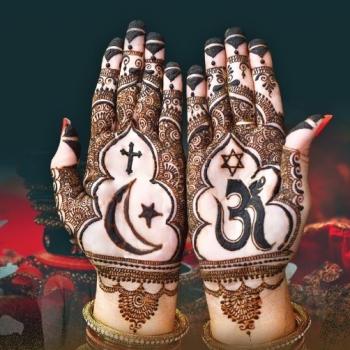
- Trending:
- Pope Leo Xiv
- |
- Israel
- |
- Trump
- |
- Social Justice
- |
- Peace
- |
- Love
The 100 Most Holy Places On Earth
Shree Dwarkadhish Temple





Associated Faiths:
Hinduism, though also important in ISKCON (i.e., the International Society for Krishna Consciousness)
Accessibility:
Open to all Hindu visitors, though the guards will sometimes make those who do not look Hindu (particularly non-Indian) fill out a form attesting to the visitor’s belief in Hinduism. Those not willing to do so are usually not allowed in the temple. Also, taking pictures inside of the temple is forbidden, as is cell phone use.
Annual visitors: 8,000,000
History
In Hinduism, Dwarkadhish is the name of an avatar of Lord Krishna. His name means “King of Dwarka,” and this temple dedicated to him is part of the Char Dham or “Hindu Pilgrimage Circuit”—which includes visits to Badrintha, Dwarkadhish, Jagannatha Puri, and Ramesvaram. The pilgrimage to the Dwarkadhish Temple (and the other three sites in the circuit) is believed to have begun in the 8th century by the Vedic teacher, Shankaracharya.
Excavations at that site have produced some evidence suggesting that this location may have been inhabited as early as the 2nd millennium BCE. And, while the current Dwarkadhish Temple is (at most) 500-600 years old, Hindus typically claim that the original temple on the site was constructed in the 3rd millennium BCE. Whatever the date of the founding of the city of Dwarka, and however far back the first temple on this site was established, what we can say with some degree of certainty is that the current temple there is not the original but, instead, dates from about the early 16th century.
Prior to the construction of the Dwarkadhish Temple, there once stood on this same site another temple (most likely constructed around 200 BCE). That temple was destroyed (in 1472 CE) by the Islamic Sultan, Mahmud Begada. Thus, the temple that currently occupies this this sacred site is fairly recent—particularly when compared to Hindu tradition, which places the first temple on this plot at around 2900 BCE.
While the sanctum of the temple is dedicated to the “King of Dwarka” (which would be Lord Krishna), there are a number of other smaller shrines on the same site. For example, there is an altar dedicated to Krisha’s older brother, Lord Balarama. Another contains representations (or “idols”) of Krishna’s son and grandson. There is one dedicated to Lord Shiva, and another to Krishan’s mother, Devaki. Additionally, there is a shrine on site dedicated to Veni-Madhava (or Vishnu). Behind the main temple is a rectangular building which houses the gods Jambavati, Lakshmi, Radhika, Sarasvati, Satyabhama, and others. Thus, while most who visit do so to worship Krisha, there are many deities onsite to engage in darshan (or the “viewing” of the god).
Religious Significance
Hindus (and some practitioners of the Hare Krishna tradition) profess a belief that the town of Dwarka was actually built by Lord Krishna, one of Hinduism’s most popular and important deities. Tradition states that, upon this piece of ground which he had reclaimed from the sea, Lord Krishna built a thriving city. In that thriving metropolis, Krishna’s great-grandson (VajraNabha) would eventually establish the temple over the palace of his great-grandfather.
This temple is perceived as sacred space for a number of reasons. It is the location of an important Hindu festival known as Krishna Janmashtami (meaning the “occasion of the birth of Krishna”). That annual celebration commemorates the birth of Lord Krishna. The festival takes its name from the Hindu teaching that the god Vishnu has had nine avatars or manifestations (akin to births or lives). He is expected to have one more. In Hindu belief, Vishnu’s eighth avatar was when he was born as Lord Krishna. Hence the festival’s name.
Since the town of Dwarka was founded by a god, Hindus and (to a lesser extent) members of ISKCON—or the International Society for Krishna Consciousness—believe that a pilgrimage to this sacred site can provoke awe and contact with the divine. Professional pilgrim, Stephen Knapp, described his own powerful encounter at the Dwarkadhish Temple, noting “my whole consciousness was focused strictly on the deity of Lord Dwarakadish. In fact, I could not take my eyes off of Him. It became a very powerful darshan in which I felt I was not only looking at Lord Dwarakadish, but He was also looking at me… The feeling and energy I got from it lasted for days.” Others have expressed similar experiences and emotions as they have visited this sacred site.
Because of the events Hindus believe transpired on this very site (some 5,000 years ago), it is a very popular pilgrimage site; one which is provocative of “spiritual experiences” many Hindus claim are unlike those they have encountered previously. For a faith-filled Hindu, visiting the Dwarkadhish Temple would be like visiting the “Holy Land” if you are a Christian or Jew. Both encounters invite the pilgrim to reflect on what is believed to have happened here, and the impact or importance of those events on the life of the believer.








